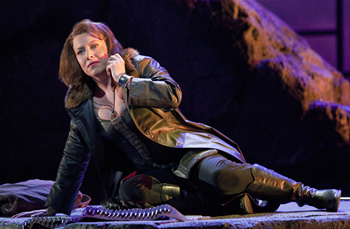At 3:00 p.m. on Sunday, July 27, the Raleigh Chamber Music Guild launched the fifth season of Sights and Sounds on Sundays at the North Carolina Museum of Art. A good house was in attendance to greet the Mallarmé Chamber Players and three guest artists: Toni Hall and Ivy Burch, African dancers, and Kwabena Osei Appiagyei, from Ghana, West Africa, who presented African song and percussion. “Ise Oluwa, African chant and dance honoring the Elders” provided a joyous crowd-pleasing participatory event as the finale.
“Have you ever seen the Chuck Davis African American Dance Ensemble?” I was asked. “He always gets everyone involved like that at the end.” And so a tradition, born in North Carolina, is alive and well, with a Mallarmé spin on it. All comments were enthusiastic as audience members departed following the performance. Others lingered to share opinions at a reception.
Tom Ward, president of the Raleigh Chamber Music Guild, made welcoming remarks and noted a date change – from August 24, 2003, to April 25, 2004 – for the program “Musical Postcards From France.” The colorful afternoon proceeded as the Mallarmé Chamber Players presented African chant, music and dance.
The program opened with “Jaliahda and Lamban,” a chant and dance. The introduction to the dance and its choreography were every bit as charming as the music. Anna Ludwig Wilson, flutist, and Jonathan Kramer, entered and crossed the stage; he poised over cylinders of drums instead of his cello. Guest artist Appiagyei took his place next to them with a small hand drum, and they proceeded to “fife and drum” the guest dancers, Toni Hall and Ivy Burch, onto the stage. They wore hot pink and bright yellow costumes to match their perky performance. The dancers involved the audience in the breathless rhythm of accompaniment, concluded the performance and backed off the stage.
The next African experience, Country Dances (1779), for flute and cello, were interesting for me inasmuch as I listened before I looked and said to myself, “Could these have been old English dances?” The basic Mallarmé ensemble performed: Wilson, Kramer, and pianist Deborah Hollis. The biography tells us that the composer, Ignatius Sancho (1729-80), developed his first memories as a child slave in Greenwich, near London.Sancho became a merchant and was an outstanding citizen of his time, hisportrait having been painted by Thomas Gainsborough in Bath in 1768.
“Antubam” (“Wailing Song”) (c.1965), for cello and piano, written by Kwabena Nketia, a teacher of guest artist Appiagyei, was performed by Kramer and Hollis. “Walking Song” (1984), “for flute, piano, and two handclappers/finger-clickers,” by Kevin Volans (b.1949) brought the comment from the Ghanan participant that the goal is to Africanize Western music. Volans now lives in Ireland but records and studies in South Africa.
A piano solo, “Study in African Jazz 3” (2002), by Akin Euba (b.1935), eased us into the second half of the program. Hollis and Wilson were a picture in their colorful caftans and they didn’t miss the photo opp. – indeed, a professional cameraperson was busy all afternoon.
“The Cattle Have Gone Astray” (1999) by Hans Huyssen (b.1964) was introduced from the back of the hall by the flute, followed by the cello. The flute processed forward, and all joined in to complement the piano. A few bongo-like strokes were strummed on cello, in addition to its expected role. As the work ended, the pianist walked off, and then the cellist carried his instrument off stage. Wilson was left alone, continuing with breathless flute to the light, airy conclusion, before walking off to await the finale. Flashback to paragraph one!











